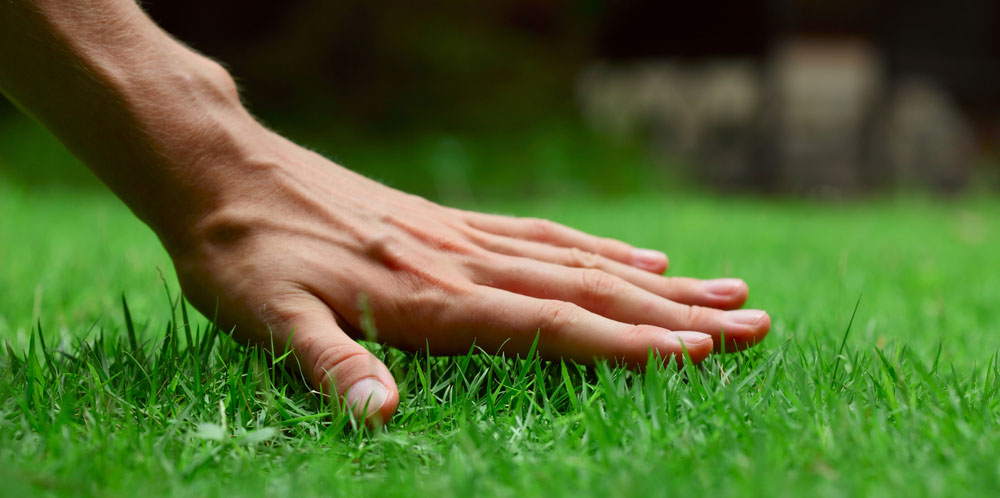
Saving money is on all of our minds these days, and implementing proper watering and planting practices can not only provide positive differences in your water bill, but also give your lawn the best possible opportunity to grow and thrive.
Is your lawn drowning?
Excessive watering of lawns is a big issue in this area. In fact, landscape irrigation can account for more than 50% of all the water used in Texas during the summer – and about half of that water is wasted due to over-watering or runoff.
Odds are you’ve seen an automatic sprinkler system running in the middle of a downpour or water streaming down the driveway from an already saturated lawn. These are classic examples of wasteful watering practices and all too prevalent. Please reacquaint yourself with some of the tips we offered up last spring, along with some new money-saving ideas to help you during this time and beyond:
Add a water sensor to your irrigation system. This may well be the most important thing you can do to avoid excessive and unnecessary watering, and it will save you money on your water bill!
For those of you without irrigation systems, Michael Murr, owner of Murr, Inc., and a landscape preservation and restoration specialist, suggests that you “buy some water timers at a local hardware center – at a cost of about $12.00 each”. “You can add these to outdoor spigots,” says Murr. “This allows you to time your watering similar to the irrigation timer and helps you to avoid walking away with the water running if you forget to turn it off.”
Check irrigation system timers. It’s always best to water in the early morning hours (3-5 a.m.) for maximum effectiveness. Watering in the heat of the day can cause much of the water to evaporate before it ever reaches your lawn or plants/flower beds. Also, make sure heads are adjusted and check for solenoids on the valves themselves.
Remember, it is always better to water deeply versus frequently – it encourages well established root systems. Soil should be soaked to a minimum depth of six inches, and should not be watered again until the soil an inch below the surface is dry. Healthy, properly irrigated lawns rarely require more than one inch of water per week during the summer months (unless there is an extended dry spell).
If you are considering a more effective, cost-efficient irrigation system, look into low output sprinkler heads, bubblers, or drip irrigation systems. And make sure you work with an experienced, licensed professional, well-versed in designing and installing the system that will work best for your unique yard. Individuals should be licensed by the Texas Commission on Environmental Quality (TCEQ) and should be able to show you their license number. Ask for it to ensure you’re working with a qualified specialist.
Don’t cut your grass too short. Mowing grass at the proper height (three inches for St. Augustine and one inch for Bermuda) decreases the need for watering. Cutting grass any lower can cut into the stem and cause it to lose its ability to photosynthesize – making it more susceptible to disease and insect problems.
Keep It Natural!
Using organic mulches such as pine needles, pine bark, straw, leaves, wood shavings, compost or sawdust can exponentially help your yard reach its full potential. Organic mulches reduce soil temperature, conserve moisture, and control weeds that compete with desirable plants for a drink. Two inches of mulch used around plants twice a year will allow your plants and flowers to thrive.
Michael Murr also suggests mulching grass instead of bagging it.
“This is as simple as purchasing a mulching blade for your existing lawn mower and leaving fine clippings in the lawn,” says Murr. “This tends to put free fertilizer back on the yard, saving on fertilizer bags (which aren’t cheap) and water.”
If you do choose to purchase fertilizer, we recommend using an organic. Synthetic fertilizers can kill off beneficial organisms in the soil, resulting in more insect, disease and weed problems, while organic fertilizers allow the good microorganisms to grow stronger. Just as important, synthetic fertilizers can pollute our streams and other waterways and can also be a potential danger to ourselves, our pets and ironically, to our plants. It just pays to go organic. You will see a wonderful difference in the quality of your lawn, plants and shrubs, while eliminating any worries about the health of you, your family and your neighbors.
Investigate Your Lawn’s DNA
Finding out what your lawn needs to be fed is extremely valuable information. Send a soil sample to the Texas A&M University Soil, Water & Forage Testing Laboratory to find out the deficiencies you may have in your soil and which nutrients are needed. It’s well worth the minimal cost of around $10 per sample (for a routine analysis) to bring your outdoor space back to beautiful! You can find a submittal form, along with detailed instructions on how to properly send your sample(s) at http://soiltesting.tamu.edu.
A Total, Annual Makeover Isn’t Necessary
When purchasing new plants, consider native, drought-tolerant varieties…they’ll require less work and less water and can be just as beautiful as other less-tolerant options. The specialists at Murr, Inc. suggest perennials for seasonal color.
“Knock Out Roses are really beautiful most of the year,” says Murr, “and others, such as Lantana or Plumbago add color, but don’t have to be replaced each year. You can imagine the savings when, after your initial planting, you’re replacing only half (or less) of your plants and flowers each year.”
To help create your best yard possible, remember to visit the helpful experts at your local nursery.
Have a wonderful season and happy planting!